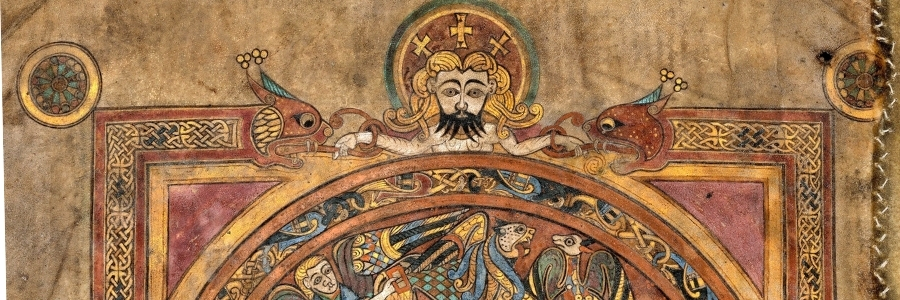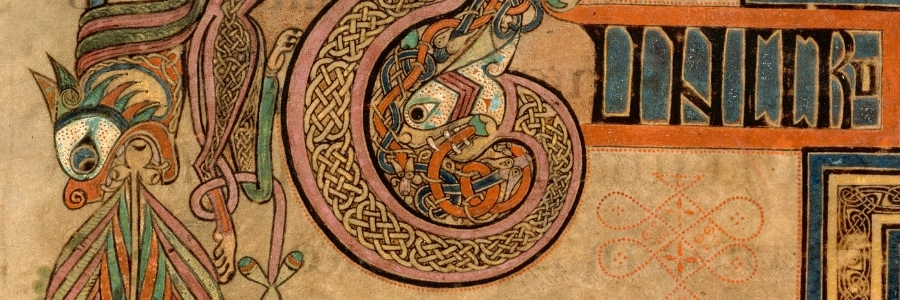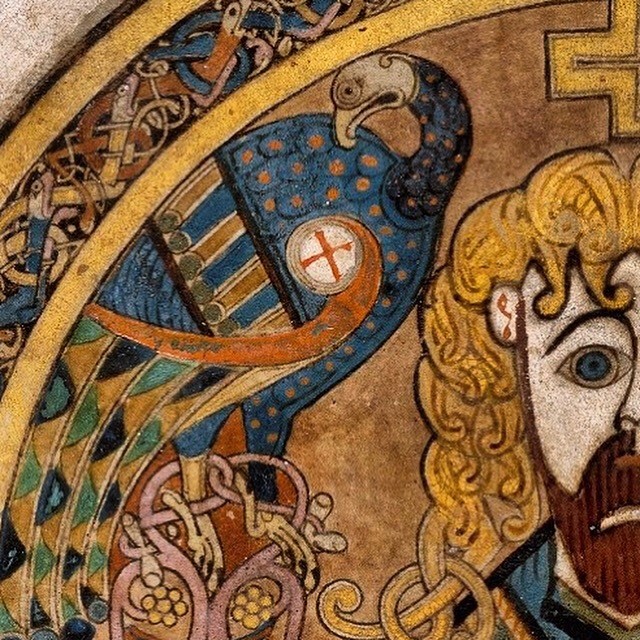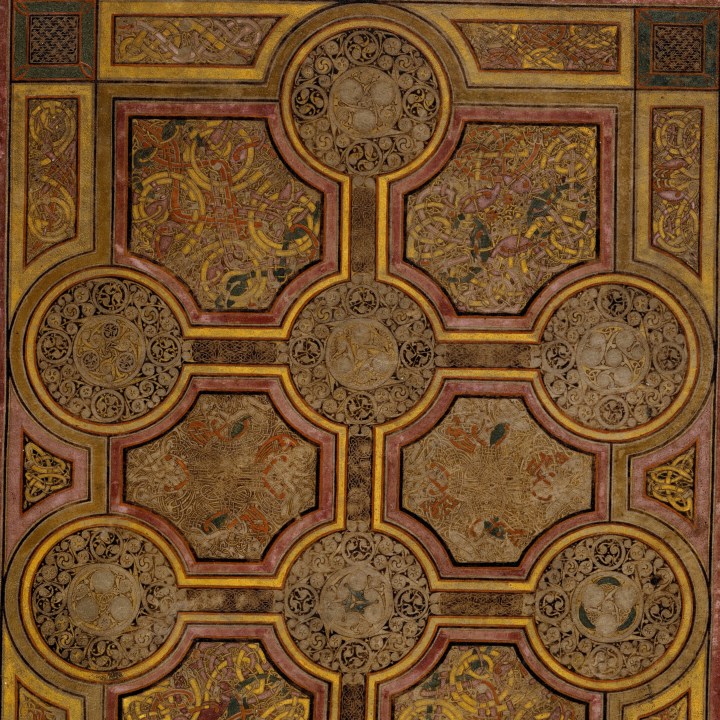

The Book of Kells is so exquisitely painted that for centuries people have wondered about the source of its vibrant and varied colour palette. Alongside the indigo and azure blue we talked about in our last blog, the colours white, purple and pink also feature heavily in the famous book.
Today, people often consider the provenance of the items they use and consume, and whether these items are sustainably made. Years of research into the book’s pigments have revealed that these colours were largely created using locally sourced materials readily available in medieval Ireland. The whites, pinks and purples in the manuscript are no exception!

The colour white in the Book of Kells is usually used to paint faces and hands, as well as the heads of animals, such as lions and snakes. It is also used to alter other colours, by lightening the blues and greens, for example. This colour was created from gypsum, a mineral containing calcium, which is readily available in Ireland. It is widely mined and used to make plaster and chalk nowadays.

The exact source of pinks and purples in the Book of Kells is something that evaded the conservation team at Trinity College Dublin for some time. However, a recent breakthrough revealed that the rosy and lilac hues in the ancient manuscript are derived from lichen, which grows on trees, soil and rocks throughout Ireland. Lichen is composite organism of algae or cyanobacteria living inside fungal threads in a symbiotic relationship – a truly remarkable thing. The dye extracted from lichen has been widely used since the 6th century for dyeing parchments, yarns and textiles, as well as being used as a colourant in illuminated manuscripts like as the Book of Kells.
Feeling inspired?
The vibrancy, beauty, and application of colour in the Book of Kells has fascinated viewers for centuries. This year the Book of Kells Creative Competition calls on people of all ages to create a piece of art or writing inspired by the colours that appear throughout the ancient manuscript.
Entry to the competition is free and the deadline is 30 October 2020. Learn more here: bookofkells.ie/competition

